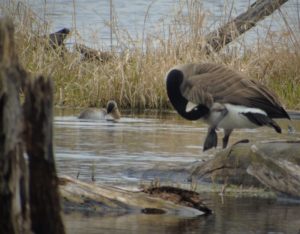By Bruce Ross, Executive Director
This article originally appeared in Wisconsin Waterfowl Association’s September, 2020 Newsletter edition.
At the WWF-sponsored Waterfowl Summit, Taylor Finger, the DNR’s Migratory Bird Ecologist, had some last minute updates before the season begins.
- The early season forecast: Although COVID restrictions prevented spring breeding population flights (COVID) for the first time since 1973, he expects early goose and teal hunting to be quite good:
- Local Canadian geese numbers are high, and there’s no reason to believe the Mississippi Valley Giant Geese populations (which make up 40% of the Wisconsin harvest) are down to any significant degree – so he expects a “huge” early goose season.
- Teal hunting should be good – a combination of excellent U.S. prairie breeding conditions this spring and fair Canadian conditions (as they slowly come out of last year’s drought).
- Water conditions for the early season will be quite variable throughout the state, but expect less water than last year
- Regular season forecast: Good U.S. conditions and fair Canadian conditions should lead to good fall flights of both ducks and geese.
- Wood ducks are especially abundant, and anecdotally, there are a lot of Wisconsin-grown mallards around, given the terrific Spring breeding conditions this year.
- Finger highlighted significant regulatory changes, all informed by science and driven by public input:
- For the first time in a very long time, Wisconsin will enjoy a bag limit that includes two mallard hens per day, similar to surrounding states. Dr, Fowler undertook a collaborative study comparing WI harvest and mortality rates with that of Minnesota (which has had a two hen bag for years) and found survival rates are not impacted by such a harvest bag limit – they are more affected by habitat, spring breeding predation or other factors.
- For the first time in years, the North Zone will open on a different date than the South Zone – 26th of September, as early as allowed by the USF&WS
- Conversely, both the South Zone and Mississippi Zones will open October 3rd with a five day split. Indeed, the MZ is exactly the same as the South, driven by public input.
- Scaup: USF&WS projects the Scaup population at less than four million birds, a large number, but still below the threshold for implementing some constraints that this year will include a limited bag of one bird for the first 15 days of the season, after which it bumps to two birds per day.
- There was a two-year, 270-property review of refuges and closed areas – it hadn’t been updated in 40 years. For example, there were still some Canadian geese safe areas on the books when the need had long since evaporated. Maps have been updated, but it was only approved three weeks ago and it goes into effect today! The net result of this review is
- 3,000 acres of important stopover area remains protected.
- The DNR removed 22,000 acres of closed/refuge that was no longer warranted, opening these lands up for increased use, including hunting.
- It’s not clear whether the DNR’s digital public land mapping apps have been updated for all these changes, but they’re working on it hard – when in doubt, check DNR regulations in NR 11 for the updated maps.
- As a result of these late-breaking changes, posted signs may not match the new regulations…. Unless violations are malicious, wardens will take this into consideration and use any interactions as an educational opportunity, more than a citation opportunity.
(Bruce Ross Note: this was a huge undertaking and results in greater opportunity for WI waterfowlers.)
There’s a lot more detail in Taylor’s actual presentation, check it out here: 2020 Waterfowl Season Update and Beyond.

